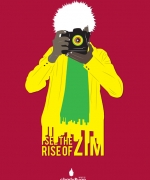A Thousand Icons on a cultural desktop
Definitions
1) A relative aura that exists around objects, has an ability to evoke memories and trigger emotion and thought through visual interaction.
2) The visual ability of an object to stimulate
3) An Intuitive stimuli force generated by objects through visual interaction. Definition or classification of this force is based on varied response.
The energy embodied within objects exists in relative form and classification depends heavily on the varied historical and social background of the individual or the collective audience. In culturally sensitive societies like Zimbabwe there is a meaning attached to every visually perceived thing. This unspoken or unwritten code to everything becomes the energy of the object. Objects are always suggesting both eloquent a vague energy depending on the intensity of the experience between the audience and the object in question.
The energy test
One way of establishing the energy of an object is a simple way called the energy test. In this test you ask the questions
a) What is the first thing that comes to your mind suddenly without thinking as you look at the object?
b) On a scale of 1-10 how intense are the thoughts you have written down?
You have to realize that the success of your test depends entirely the honesty of your answer .This might require you to express your answer in any language or format that really captures the mood and expresses your deepest feeling attached to the object.
The Principle of “found energy” is the one on which the Zimbabwean movement of the art of found objects is based. This movement was realised pioneered around 1986 by a small number of sculptors with Tapfuma Gutsa as the iconic figure in this movement. Tapfuma had just returned from London completing his studies on sculpture. His return was marked by a quest for new definitions of sculpture ,this was in the background of a thriving institution of “shona stone sculpture”. Tapuma’s quest was almost iconoclastic this led to in co-operation of several objects as part his sculpture. This movement later flourished during the period between 1993 and 2003 with Keston Beaton at the centre of it all. Keston Beaton was one of Tapfuma Gutsa’s apprentices from his high density studio “Utonga”. Two very important events marked the years 1993 and 2003, in 1993 Keston encountered the work of Anne Carrington an artist visiting Zimbabwe she was working in found objects and had a carefree approach to her work. After this encounter Keston worked with such liberty and was to an extent immune from the commercial pressure to produce craft pieces.
The year 2003 saw “Redefinitions” a three man exhibition by freshman students from Harare Polytechnic, these were Gareth Nyandoro, Masimba Hwati and Munyaradzi Mazarire. This Exhibition hosted by Delta Gallery marked an advanced developmental stage in the art of found objects.
This movement has grown from being a conventional assemblage statement of art to an anthropological and cultural inquiry and record.
The Zimbabwean visual culture is characterised by a lot of iconography and symbolism that illustrates the energy of objects. The energy within a given object can exist in two or more forms definition of these forms is heavily dependent upon the subjective response of the audience. This response can either cognitive or aesthetic.
Follow the rest of the article below
- A Thousand Icons on a cultural desktop
- Innate, Implied and Imparted Energy
- The energy of objects illustrated in Shona Rituals
- Zimbabwe in Cultural Transition




